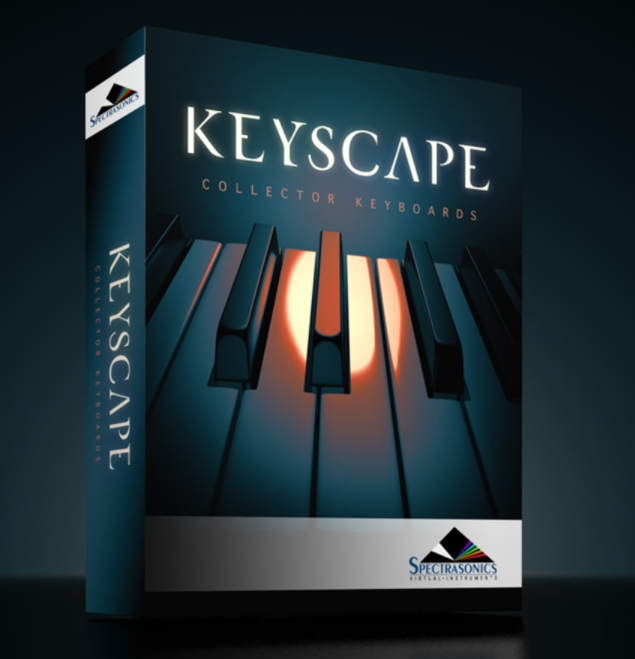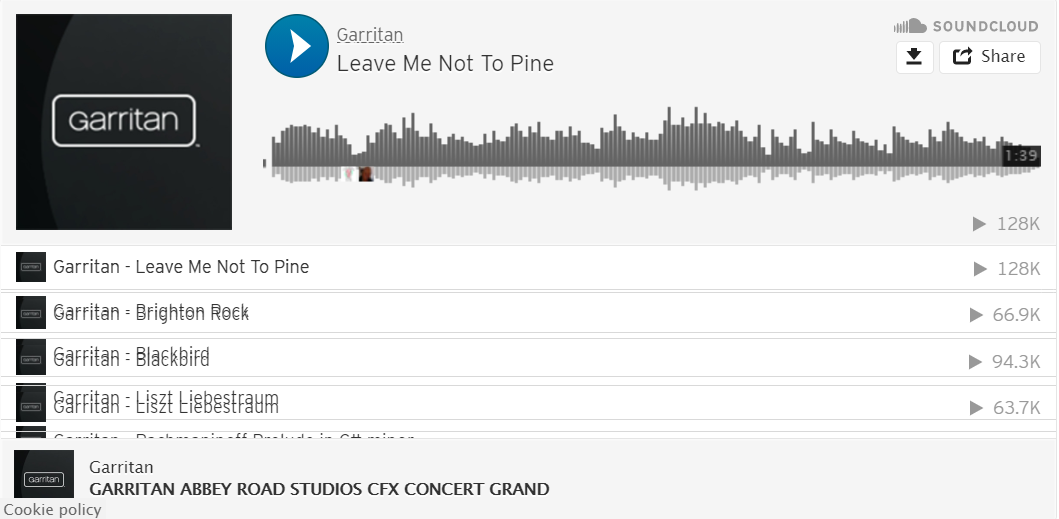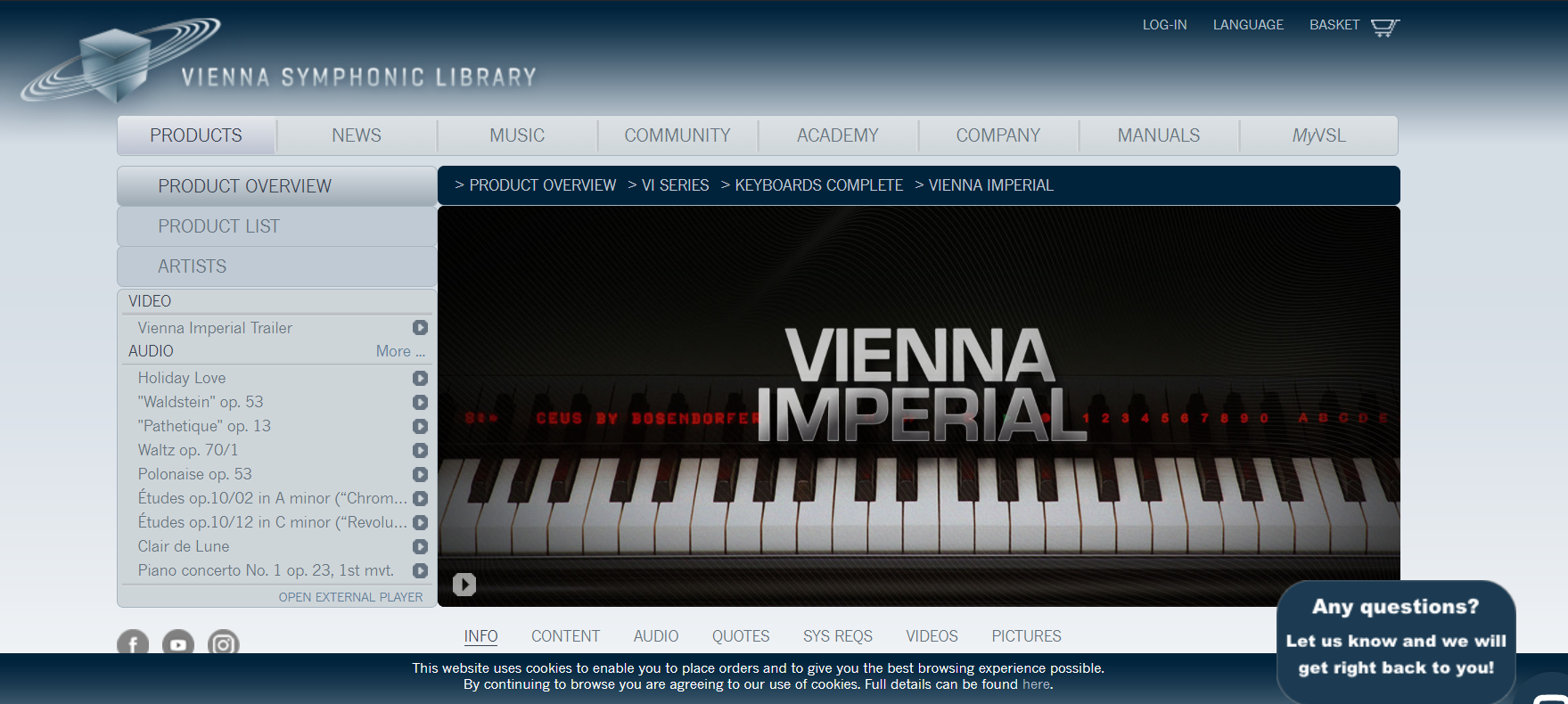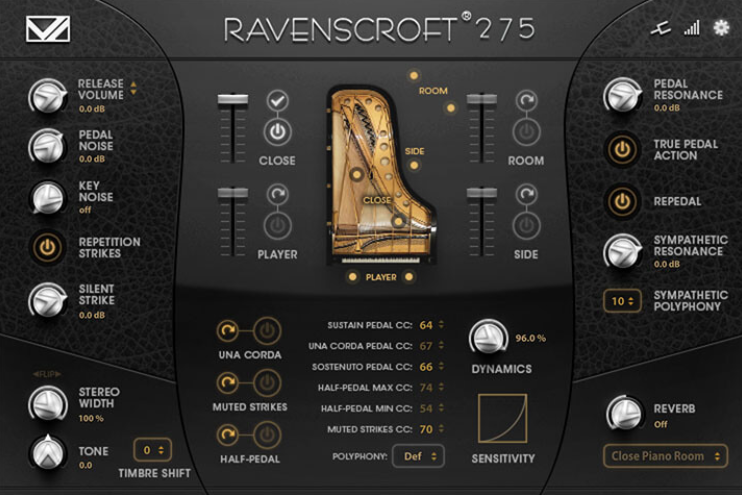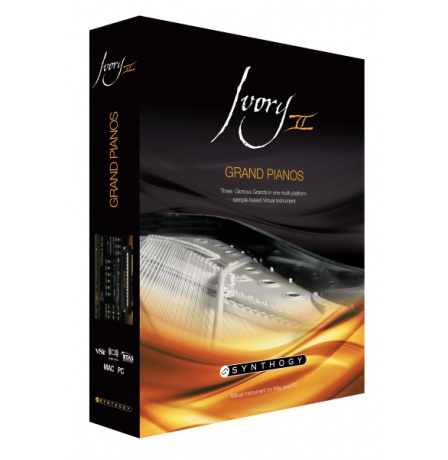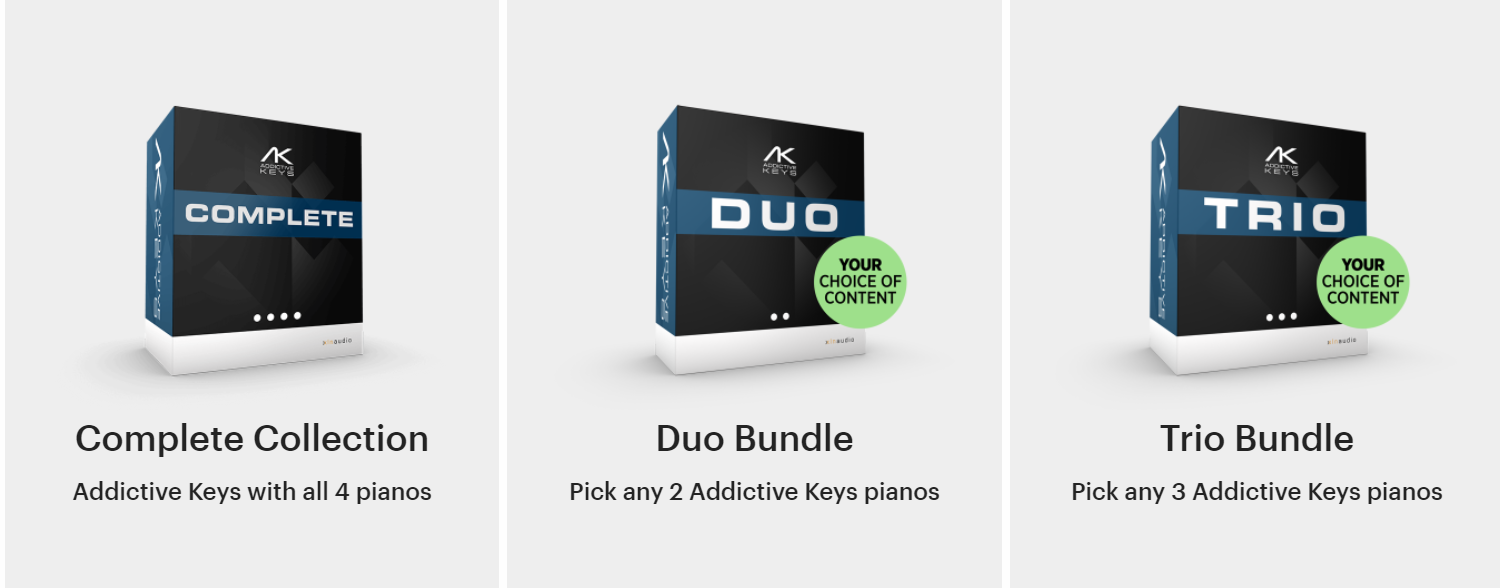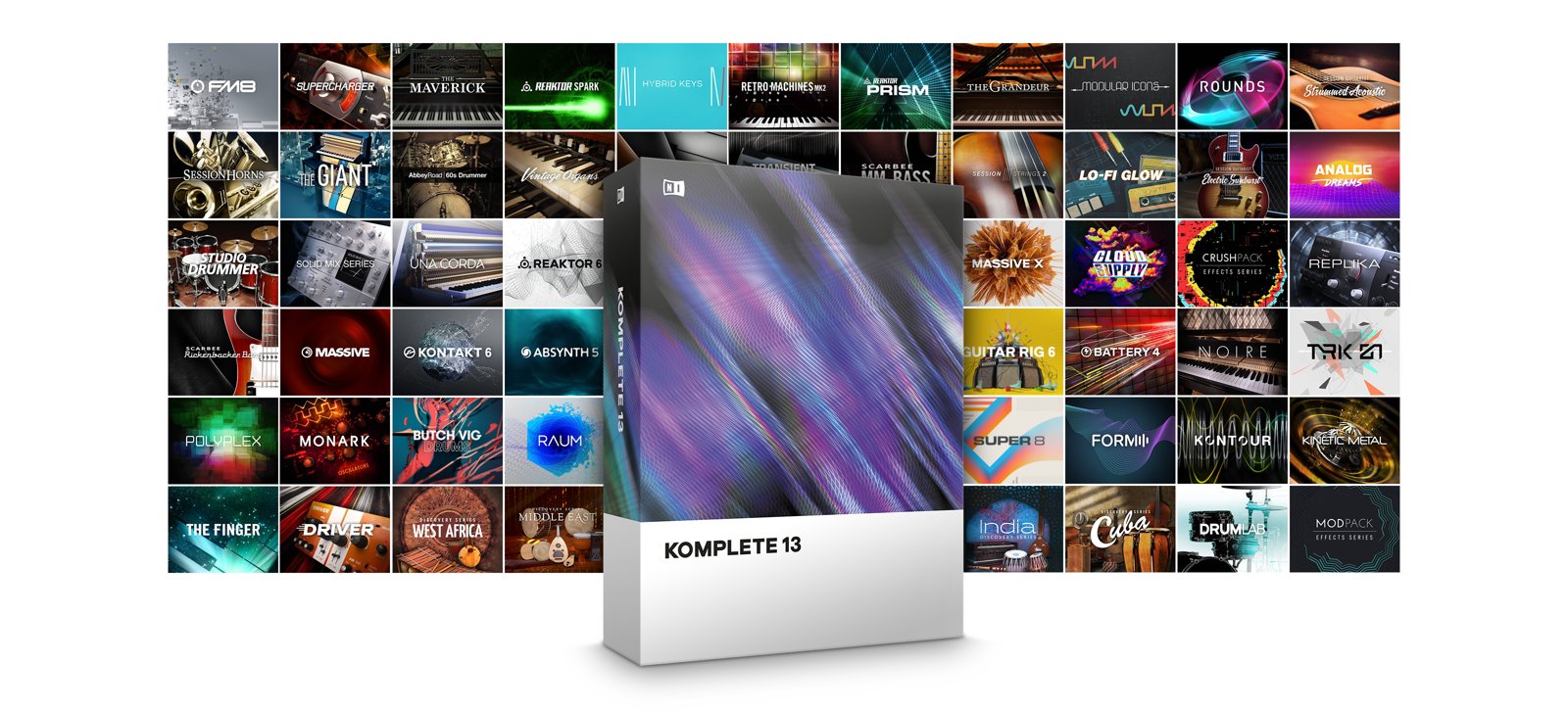VST for Midi Keyboards- It is incredible what we're doing in today's modern world with vibrations. The image I'd paint: assume you would like to make your piano records include a sound from Steinway and Sons, but still the only budget for a more miniature, cheaper digital piano.
You wouldn't even have a complete digital piano of 88 keys, and you may just have 49 and also 25 keys on such a MIDIkeyboard. However, with the power of editing the MIDI, you can still score great piano sound.
You must have seen a Roland 88-key digital piano and also the Korg nanoKEY2 controller with a midi 32-key keyboard – both of which produce the identical remarkable tone by VST plugins.
About VST Plugin
It is "Virtual Studio Technology", which relates to the DAW instrumental or impact plugin on your screen.
VST devices called samples can also be listened to. Samples typically come in the "sample library" library set. Native Instruments, the Vienna Sinfonica Library, Output, EastWest etc., are some of the better-remembered libraries.
There is indeed the program that contains music patches, otherwise recognized as just a sampler, to link to a sample library.
Native Musicians Touch 6, Vienna Ensemble Pro and EastWest Play are some of the most popular hosts. View these as "files," containing and encouraging you to operate various sampled sounds.
If you activate a Kontakt player using such a DAW, for example, you will open the window to pick the sound that your piano produces in one track. The trumpet effect can tone like such a trumpet for your piano.
The sampled music is produced by actual people who spend hours documenting a solo note on a guitar (such as legato, staccato, lower attacks, a mute, and higher attacks.)
Most samplers could run on your machine as a standalone feature (without DAW use) so that you can play the various samples and listen to them.
Similarly, some VST tools also come with standalone versions, which entail no more functionality. Even so, you would also require a DAW to capture & modify compositions.
Include Cubase Version 10, Pro Tools Version 12, Digital Performer Version 10, and Logic Pro X, which are some of the industry standards for composition and increased recording.
Ableton Live tool is a renowned DAW to produce EDM for starters.
You convert the music note you perform on your claw to the MIDI format when you add your digital keyboard to your machine, but use the sampled piano sounds throughout the sample library.
MIDI is an extremely versatile instrument that allows you to change notes, phrasing, notes and rhythms, and volume through the usage of a durable pedal.
Please note that the VST instrument does not use the music of the digital piano with the sampled or modelled sound.
You should link to Piano Dreamers voice recording guidance if you want to film the sound on your piano.
Need Of VSTs
A selection of choices for your music recording needs can be provided with VST instruments. You might not like your digital keyboard's programmed sounds, or you might just want to enlarge your range of sounds with various piano musicsamples or experiment with much other equipment.
This may sound unclear when you're using your piano digital to play comments mostly on piano, as some other equipment, like guitar or violin, are available from your computer via VSTs. You may even play notes on even a piano.
Vocalists sometimes request me for just a piano track but still need this in a slightly different order. You may switch the notes of MIDI of my personal DAW to transcribe the sound rather than playing on a new key and capturing the original score.
It's much less challenging to record MIDI in such a DAW because you can edit erroneous notes or alter a note that's also pressing too loudly.
It allows you some extra time by avoiding such a need to later re-register or "start it". Once you are captured in MIDI, you could adjust a sample to audition different sounds and then select a one you like.
How To Get The Correct Equipment
In order of using VSTs, you want to have connections to:
- A MIDI keyboard or Digital Piano with only a USB B-Type or even a common MIDI attachment to old Keyboards. For the connection of your keyboard to a device, please see our Connectivity Guide.
- A DAW like Pro Tools season 12 or Logic Pro X
- Computer or even a tablet. The test can be downloaded with this room as well as the RAM, which allows you to operate fast and effectively without delay in the DAW.
- A selection of headphones or speakers
- Optional: an SSD to substitute the computer's hard drive as well as an additional SSD as sample storage.
- If you really can manage just one SSD for experiments, mostly on a drive and save the use on the CPU, try to buy an additional SSD for storage.
- For expert users: you should use a "Slave" PC, which would be typically a Mac Pro desktop or superior PC for executing sample music libraries without any of the leading PC's CPU.
- The less powerful and more prolonged it is required for your DAW, the more specimens you require, the much more many composers in the industry choose a slave Computer can save on their CPU use.
You will require Vienna Ensemble Professional to link the two machines to your central device, acting as just a sampler for hosting your samples.
For example, in my situation, my slave is indeed a PC, & my Macbook Pro is my primary machine. Both machines run the internal SSD, & the 64GB RAM on my PC is much more effective for running tests.
This configuration is completely optional and relies on the workflow.
You should also provide an interface of the audio in your configuration.
You should add various microphones and instruments using an audio interface to monitor them so that you do not restrict yourself to the piano as just a controller inside your DAW.
By translating an analogue signal with one digital one, you can capture the audio of its various instruments and are not restricted to your MIDI.
Top VST Plugins For Pianos
Keyscape
Among the most flexible collections available with a range of electrical digital pianos, upright pianos, and large pianos. The Spectrasonics KeyscapeLibrary.
Keyscape is also an unbelievably extensive collection through more than 500 piano noises and 36 models of instruments and composite patches. The sound library could be managed and built into an Omnisphere library of Spectrasonics.
Keycaps need 77GB storage of such a 2.40GHz dual-core Intel processor with such a minimum of 8GB RAM.
Both MacX 10 or later & Windows 7 and later are compatible.
It is very heavy with CPU, and this is suggested to choose a higher, and if necessary, 16 GB RAM or more. Due to its wide storage capacity, an external type SSD is suggested to facilitate the running of such a library on your device.
A special aspect of a Yamaha grand C7 piano is that it is filled with Wicker felt Renner "Blue Point" type hammers.
This provides a broader sound range. Jim Wilson, a famous piano technologist from LA, has been responsible for producing the distinctive sound for the piano.
You can modify the location of near microphones & space mics (excellent for solos) inside the VST Editor pane (great for atmospheric textures and ambience).
Only with Yamaha C7 you can play with mechanical sounds, the loud pedal sounds & releasing overtones while a notice is carried (like a genuine acoustic piano).
Keycaps provide hybrid "duo" sound patches that are used to build a new layer with such a VST instrument.
The Yamaha grand C7 with such a claycord or an old electronic keyboard, including just the church organ, which achieves a sound of 'underwater.'
The sounds have around thirty-two layers of speed, dynamically diverse and broad only for the sampled library.
Keycaps sound just fine on its own without any user end modification. Many sophisticated subtleties really aren't provided, such as a quarter or half-pedal and modelling sympathetic resonance.
The library is much more upright and mechanical but also provides a superb Yamaha C7 anytime you need a huge piano.
Keycaps are bought as their bundle of Collector Keyboards, but the Yamaha Piano C7 cannot be sold separately.
Garritan CFX
Even though Garritanwasn't the first database to be thought about when you suggest tests, the Yamaha Concert Grand CFX has been captured and tested only at the Abbey Road Studio.
Driven by an ARIA instrument, no different sampler is necessary.
Classical, modern, and player placement, using traditional microphones such as the Neumann AKG C12 and M49, KM 184, and D19 are among the microphone viewpoints.
The library contains some defaults that inspire you immediately. I'm a piano library regular and never create a personalized patch. I instead have presets with tweaked restraints (such as Reverb and pedal noise).
Approximately 20-speed levels per key are available in the library, like pedalling samples, pedal retention & soft-pedalling.
Partial pedalling & re-pedalling are possible. The CFX arrives with a different reverb so that a specific reverb plugin won't be needed.
Here is another part of me with a preset 'Paul's Perfect Piano' on the Garritan CFX:
We captured everything without the physical support pedal and drew it all in the editing window, increasing the pedal sounds in my output to be realistic. It starts to sound then like a full MIDI performance is captured live!
System needs have included:
- 8GB RAM Minimum RAM
- Processor with Multi-core
- 133Go of unrestricted storage as well as a fast hard drive interface
The library supports Mac OS Version 10 or higher, Windows 7 and newer, and also an ASIO soundcard.
As a film writer, you must add the CFX Garritan to your sample library since it has been created at Abbey Road Studio, where many legendary scores of films have been recorded.
The sounds of its piano preset instinctively blend into an orchestral movie setting, ideally suited to my work.
Vienna Imperial
The Bösendorfer 290 to 755 records the Vienna Imperial Pianofrom the Viennese symphony library with such a whopping 1200 samples of strong pianist possibility per key.
VSL is a composer-friendly industry-standard sound library. For real effects as well as the driving forces that it offers, many famous film composers just use firm.
There are 100 layers of speed and some samples for various note lengths throughout the Vienna Imperial Library.
You can change frequencies and microphone locations (distance, middle or player position and close or microphones throughout the piano corps) in Basic & Advanced View, convulsive reversal, pedal noise, familiar sounds, stereo width and octave shifting. The GUI is available to view in Basic or Advanced Views.
The Vienna was collected on 290 to 755 Bösendorfer, which means there are nine additional notes on a regular piano below the lower A. Within the Specialized view, such notes are allowed by the octave change.
The sound of its Imperial keys is distinct and simple. There's many presets, such as the location of the player as well as a view of the public.
The integrated reverb and EQ configurations were greater than most of the other library settings.
If you didn't have a Reverb or EQ plugin, the Imperial are great choices since an EQ utilizes a 3-band parameter, and the pre-built Reverb would be a reverb of conversion that is not usually the situation with integrated reverbs.
It then seems as if the Reverb has been caught in the sampled space instead of by the addition of reverb duration.
During an orchestra, the Imperial plays well. You must learn from your experiences, so when combined via an orchestra, some VSTs are as though they were a sore thumb; however, the Imperial mixes in beautifully.
This is perhaps the best VST money could buy for piano due to careful details, flexible settings as well as a data volume of 46 GB.
Your machine can use a minimum of 4GB of RAM.
The Mac OS 10 or higher is compatible, and Windows 7, or 8 & 10 is compatible. The Vienna Key, and even other eLicenser for USB like Arturia eLicenser for Steinberg, is necessary in order to use another library.
Ravenscroft 275
Ravenscroft 275was produced with approx. Seventeen thousand note samples captured in the piano, though with four microphones, some of that can be changed in such a user-friendly way by the flexibility of microphone placing.
There are many 19 speed layers, including samples from Silent. With CPU and RAM assets, the piano becomes completely sample-based, albeit powerful.
The Ravenscroft can be seen from the Titanium Grand Concert Model 275. That is among the most flexible Piano VS TVs and adapts to a wide range of play modes and even serves as an ensemble concerto grand.
It has a wide dynamic range that enables fragile passages and fortissimos to grow up.
It is the "bunch of all trade" willing to take solo passages out or blend together into a group. This VST takes pride in itself and its versatility.
The assault is sharp & straightforward and provides a choice between staccato and muted hits releasing trails, with the ability to use the support pedal and also the sostenuto pedal and una corda.
If you really need atonement or do you want to play with various tonal centres & tunings, you could also change the tuning of your note.
The intensity of its pedal resonance, the True Pedal Motion as well as the re-pedal, could also be adjusted by raising the support pedal off as well as on. The piano strings echo then, but at a smaller pace.
These consequences are integrated to manipulate the pedal realistically—sampling and adjustment of this half-pedal.
What distinguishes Ravenscroft 275 would be that a VST is sample-based; however, the command looks like a modelling library.
The tone is very multidimensional and stresses each note to make different layers & harmonies noticed distinctly but not lost under melodic lines.
I found that several libraries are going to muddy the piano's bass notes, but a Ravenscroft 275 defines a bass line.
Free sample players, a UVI Workstation Version 3, are provided at Ravenscroft 275 that can be used in the DAW sampling or standalone.
There are 22 revolutionary reverbs throughout the library, which is why a different reverb plugin isn't required. There is no need for a dongle, so up to 3 machines could be used.
The sample sound library of 5.32GB), cooperative with Mac 10 and later and with Windows Version 7 and later, is at least 4GB RAM, needs at least 6GB free space to be installed.
The majority of experts use 64GB of RAM.
Pianoteq 7
The great Pianoteq Version 7is possibly the world's best design piano library. That can be utilized either independently or even as a DAW addon.
Mac OS 10 or following, Windows 7 and afterwards or Linux are needed. There is no USB or iLok dongle required, which can be utilized on several MIDI keyboards.
The use of the full-length velocity keyboard is perhaps simple, but it's not necessary because the editor of the MIDI of the DAWN will directly modify the expressions and speed.
As certain test libraries may, Pianoteq doesn't need much RAM and requires just 256 MB in the disk. Sound could be calculated by Pianoteq in near real-time to be heavily drawn on the CPU.
Most laptop and computer processors should have been able to do it all well, but with bass notes at even a piano as well as the support pedal, it could get a little hard, mostly on the CPU.
As is the case with most sound cards, you would need to have a sound card that allows ASIO drivers such that you're using your pre-built card.
Another significant benefit of using Pianoteq is that the PRO and Standard models of the software have several possibilities for sound tweaking, like microphone configuration, specialized tuning, hammer stiffness, excellent resonance, duration of the loop, duplex scale, hammer sounds, pedal sound and plenty of additional parameters.
In sampled libraries, approximately 16 different speed layers typically differ between attack & note tonality. Even so, the Pianoteq utilizes all one hundred twenty-seven layers (MIDI speed scale), which allows a very wide range of dynamics.
You don't need to use a specific pedal to be using the maintenance pedal (by using a MIDI window of the editor, you could change the sustain pedal) and use the pre-built pedal on your keyboard.
Pianoteq Version 7 is built mechanically by one of the good sounding and perhaps most common pianos, Steinway and Sons Model B and Model D. You could experience samples of such effects on the site of Pianoteq.
Many other popular pianos, which include the Ant, C Bechstein, Steingraeber E272 etc.
You could buy 149 USD piano sets that contain several piano tools (at least 2 packs of instruments you choose) or a 59 dollar packs instrument, a cost-effective option if you recognize the desired piano.
The instruments range from baroque clays & classical pianos of Steinway and Sons to pianos & auxiliary tools such as the celeste and xylophone.
Far more debit and credit cards are accepted on your web site for payment. It can be downloaded directly to your desktop or laptop machine as a digital download.
You can get incentive perks, including instructional tools discounts as well as one-year free access to International Piano as a Pianoteq user.
Pianoteq Version 7 is generally a fantastical VST piano plugin for those who want a traditional sound for piano, for people new to VST, or for someone who wants to extend the Piano catalogue on their machine without the use of too much room.
As already reported, Pianoteq 7 is proud also to be harmonious with a low-set laptop and still produce high-quality audio, so no additional transactions of RAM, ILok dongles, SSDs, software or additional hard disk for storage capacity are required.
Synthogy Ivory Version II
The Grand Piano Libraries of Synthogy Ivory Version IIare becoming a tradition for the VST piano instruments sector.
The booklet showcases its audio from 3 grand piano designs: the Imperial Bösendorfer 290, the Concert Grand of Steinway D as well, as the Yamaha Grand C7, both of which is a part of the set.
A minimum of 1.50GB of RAM & 22Gb internal memory on the hard drive at 7200RPM is required. The package is Mac X 10 or following appropriate, & Windows 7 and the following versions.
The 3 pianos equal 77 GB, but each could be fitted individually for each piano.
The Bösendorfer permits a low octave less than footnote A0. Ivory II is equipped with a DSP Sustain Resonance motor, which ensures realistic pedal efficiency.
By the esthetics of your output, you now have the right to allow or disable the noise of the pedal. The location of the deck can also be adjusted to have greater tone independence.
The package of libraries contains a wide variety of presets so that you really can preview and change the giant piano in a changing recording setting ( hall or room styles, microphone placements, reverberation).
Ivory II is becoming very based on repeated piano clips which allow players to access piano like it's on a Bösendorfer, Yamaha grand or Steinway.
The library has a sympathetic resonance of string that makes for a natural resonance tone whenever a key is hit.
The Harmonic Modeling of Resonance involves an innovative function built further into the test library that projects overtones and over holding notes much like an acoustic sound of the piano whenever the keys are pressed.
Addictive Keys
The fabulous Addictive Keys seems to be the highest budget selection, mainly on the market with the Model D of Steinway grand piano.
The sample provides a wide variety of simple characteristics like pedal resonances, pedal noise temperature or shine, near or environmental placements of microphones, and also integrated convolution, algorithmic reverberation or delay & EQ to change frequencies.
The library has configurations ranging from the stunning natural grand piano and piano ballads to movie textures and tones for experiments.
Here you can hear any samples that use the Grand Studio.
All that said, this library focuses on pianistswho change from acoustic to electronic recording.
System specifications include a sampler or extra dongle on either Mac OS 10 or following or the Windows 7, or 8, or Windows 10 that have almost 2GB RAM. It can also be utilized as an independent device.
Komplete
It was almost the very common virtualinstrument package on the market and can last for a long time. We get a copy of this directly but think it was one of the most significant decisions we ever have created since our development game has been stepped up. Native Instruments have not only their applications; they also have controllers. The following and more will be given in total: 13000 sounds and more than 100+ Go instruments & enhancements (depending on the edition you take) really. Their VSTs are essentially compiled: Reaktor, Rounds, Kontour's Keys, Alicia's Keys, numerous chorus and piano orchestras, FM8, as well as Huge (the other mad synths we use individually every time) and much more. And therefore don't believe it's really just syntheses or piano noises; there's many "actual" instrument VsTs, too, in any case. They do have congo and tropical sounds as well as drums within them.
The Native Tools Komplete Version 12is indeed a set of VST equipment and results, which takes you months to go with this, not to mention to master and actually include in your songs, even if the costs arise (depending mostly on the edition you would like to record). If that's too pricey for you, you can still take your personal VSTs cheaper, but of course, with much fewer effects.
Final Words
So this completes our list of VST plugins that you can use with your pianos. These tools are of very high quality and are refined from many VST plugins. You can totally trust in these plugins as they have been tried and tested by many famous music creators and pianists. Every single of the VST Plugins have their own unique features and tend to be different from others. You can choose your VST plugins according to the knowledge you have about piano and VST plugins and also as per your requirement. The several choices exist to extend your music library, which are first to be daunting but can improve its efficiency and create your composition music palette by experimentation with various exemplary libraries.
Many pianists weren't in agreement on the "meeting piano." We everyone has our subjective ideas and will also train you for numerous compositional circumstances by mixing variation in the piano VSTs.
You wouldn't have to know anything about sample music libraries at the beginning. Learn how to get there and start with such a sample you want.
In my knowledge, saving for a decent sample is good; otherwise, you would pay two times.
You might want to buy an orchestral package so that you do not have to buy all of the equipment groups independently.
If you really are searching for the perfect VST piano, the whole article will potentially lead you nearer to just a wonderful piano – though you just have a very MIDI keyboard including much fewer than 88 keyboard keys! So get your VST plugin and pick up your piano and create some great music and flaunt your music to the whole world and show them the creative skills that you have in the field of music.
